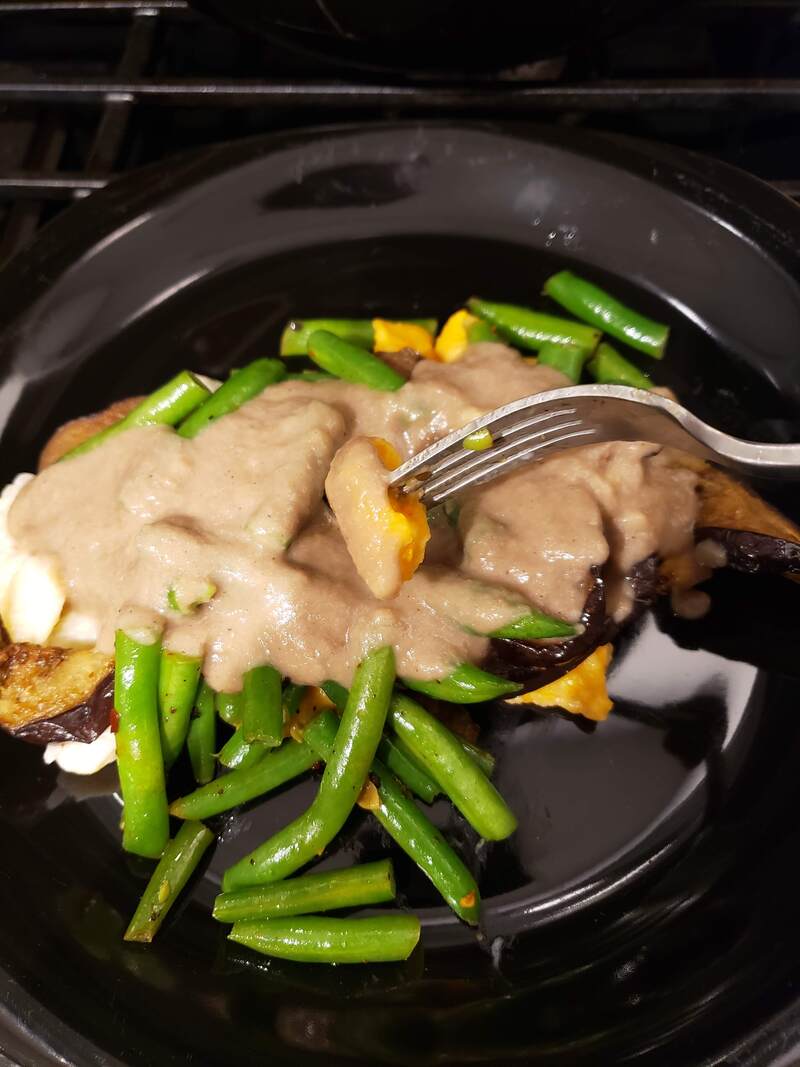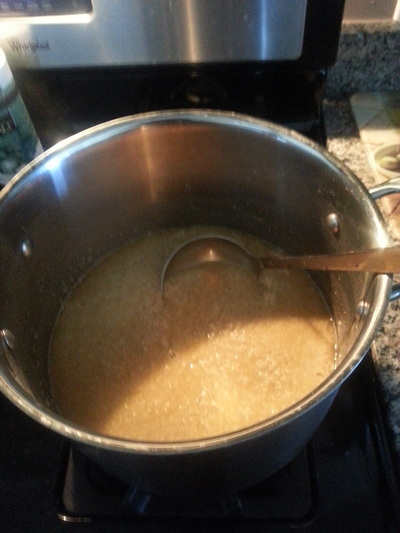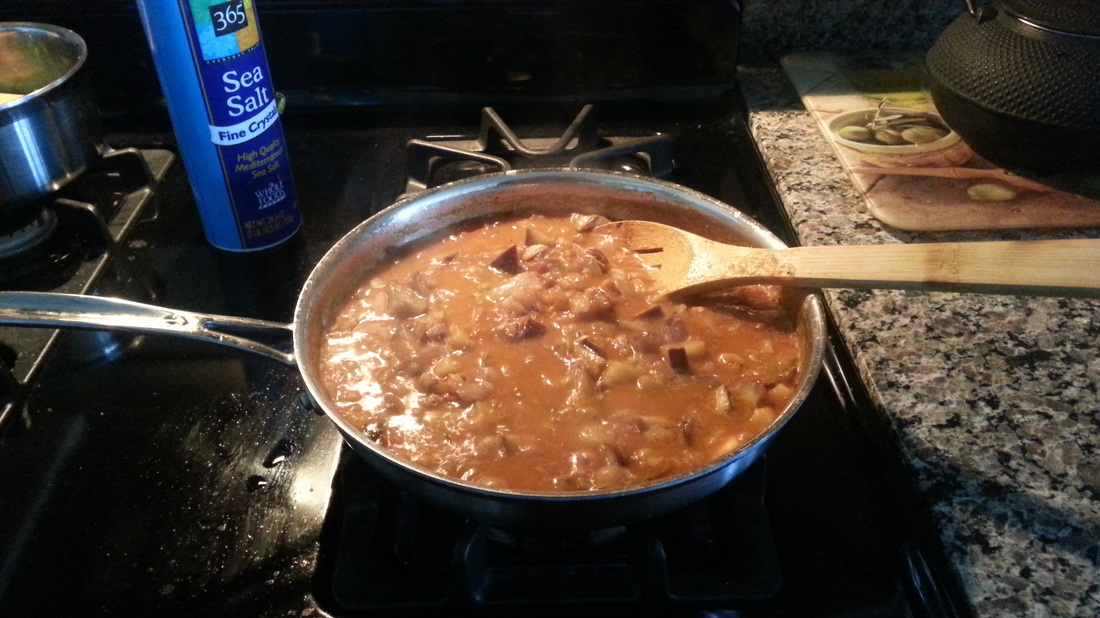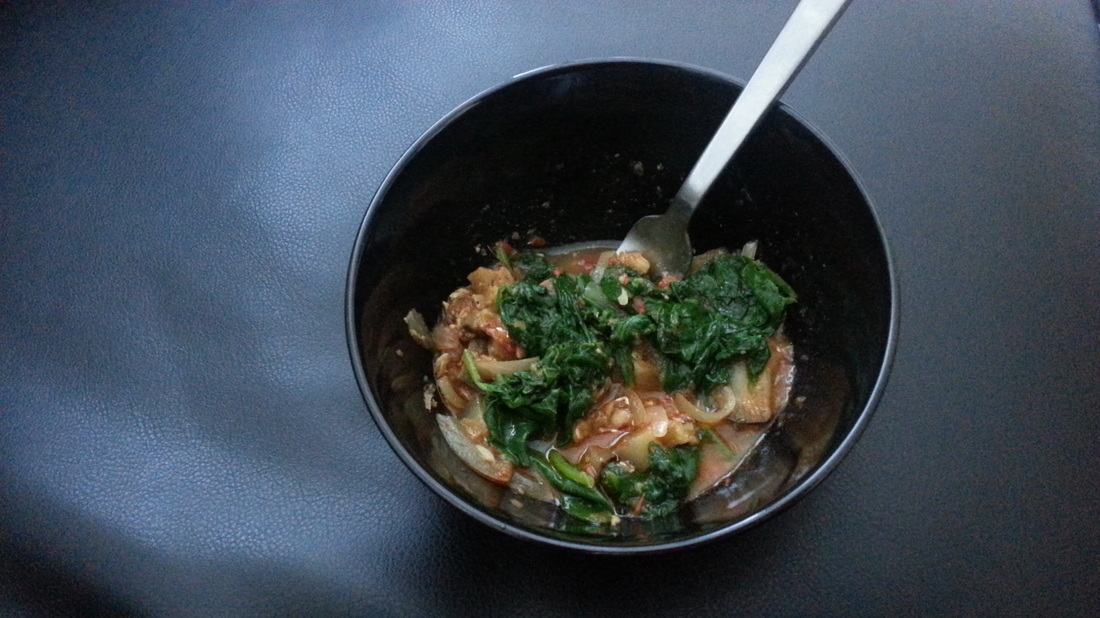|
Funny enough, my sister and I separately decided to make gnocci on the same day! I had been seeing a lot of videos in youtube shorts (like this) about how easy it is to make gnocci...so I decided to try it out. I never do things mildly, I thought it would be fun to make a sweet potato version in addition to 'regular' gnocci -- double fun! Because I needed to know measurements, I looked for vegan (no egg) recipes online and really liked these two resources (the curious chickpea, the banana diaries). I followed them in my own way and the results were decent. In hindsight, I probably needed to boil the russet potatoes longer. Anyways, what I was even more excited about was mushroom gravy! I had learned about it from a medical student rotating with us. This is the recipe. The gravy is delicious and a great option for vegetarians!!! Highly recommend. All photos are copyrighted to nnk (2023). Please ask before using or reproducing any elements or photos used and linked to in this post; any use should be attributed appropriately.
0 Comments
Did you know that some of the best Eritrean food in the United States can be found in Portland, Maine?! Yessssss....Asmara (right in downtown Portland).
Last year, I was introduced to saffron rice pudding and yellow rice pudding. The puddings, which are Middle Eastern in origin, reminded me of kheer and, separately, Egyptian baked rice. They were, above all, delicious. When I learned about the steps taken to make the pudding, it seemed a little more labor intensive than I had imagined (i.e., stirring the rice over a hot stove for several hours).
After some experimentation, and because of a lack of a pressure cooker, I finally figured out a less time consuming way to make the saffron rice pudding. The inspiration came together as I was straining my home-made rice milk mixture (this recipe is an approximation of my approach). I have been making my own rice milk for about a year now and always try to use the left-over non-milk portion in creative ways. Thus far, I have used the remains as porridge, in baking products and as broken rice. This most recent time, I had left the rice to soak (1 part brown rice to 2+ parts water) in the fridge for waaay longer than overnight and noticed that the remains were quite soft. I had also, coincidentally, prepared Egyptian baked rice with coconut milk around then and so the pudding was not far from my mind. I decided to take the rice milk remains and continuously added warm to hot water, brown sugar, saffron (ground and suspended in water), rose water and a tiny bit of oil and salt. In about an hour, I had a product that was quite close to the delicious rice puddings my friends had made in the past. [The pudding was eaten before I remembered to take final pictures. However, below are a couple of pictures taken during the process. The first is the mortar and pestle used to crush the saffron (courtesy of a friend) and the second was the initial stirring of the rice remains with water, waiting for the other add-ins.] When you're missing garden egg stew, a delicious eggplant (aubergine) dish from West Africa, you go to drastic measures to attempt to recreate it with whatever you have on-hand. Garden Egg stew is one of my favorite dishes. I eat it religiously in Ghana. One of the best preparations is at Bar Naas/NW9 -- a hip and contemporary African restaurant based in Kumasi in Nhyieso, that offers a variety of cuisine ranging from garden egg stew (of course), to shawarma, to pizza to fish n' chips (yum) and more. Equipped with Italian eggplant, anchovies, sardines, fresh tomatoes, onions, olive oil and a variety of seasonings (i.e., salt, pepper, dried pepper flakes and nutmeg) and some inspiration from TimeOut.com, I set out to satisfy my deep craving for garden egg stew. What happened was nothing short of a miracle. While clearly not garden egg stew, this poor (wo)man's rendition was quite tasty. Here's what I did:
For roughly 3 servings, 1 onion, 2-3 tomatoes, 1 small tin of sardines, 1 small tin of anchovies and 1 Italian eggplant are plenty. It was so nice that I only got to eat it twice. |
AuthorBesides enjoying 'good eats', my sister and I attempt to recreate dishes we have enjoyed elsewhere. Friends sometimes join us in the trial and error. Some attempts are more successful than others. Archives
August 2023
Categories
All
|






 RSS Feed
RSS Feed
